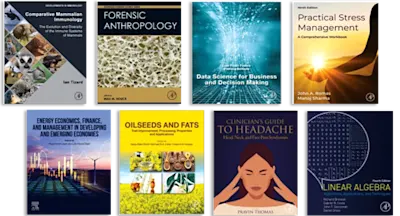
Ni-free Ti-based Shape Memory Alloys
- 1st Edition - September 17, 2018
- Imprint: Butterworth-Heinemann
- Authors: Hee Young Kim, Shuichi Miyazaki
- Language: English
- Hardback ISBN:9 7 8 - 0 - 1 2 - 8 0 9 4 0 1 - 3
- eBook ISBN:9 7 8 - 0 - 1 2 - 8 0 9 3 8 4 - 9
Ni-free Ti-based Shape Memory Alloys reviews the fundamental issues of biomedical beta-type Ti base shape memory and superelastic alloys, including martensitic transform… Read more

Purchase options

Institutional subscription on ScienceDirect
Request a sales quoteNi-free Ti-based Shape Memory Alloys reviews the fundamental issues of biomedical beta-type Ti base shape memory and superelastic alloys, including martensitic transformation, shape memory and superelastic properties, alloy development, thermomechanical treatment and microstructure control, and biocompatibility. Some unique properties, such as large nonlinear elastic behavior and low Young’s modulus, observed in metastable Ti alloys are discussed on the basis of phase stability. As it is expected that superelastic Ti alloys will further expand the applications of shape memory alloys within the biomedical field, this book provides a comprehensive review of these new findings in Ti-base shape memory and superelastic alloys.
- Includes coverage of phase transformations in titanium alloys
- Discusses mechanical properties and alloy development
- Presents a review of Ti-based shape alloys and their applications
Researchers and engineers working in materials science, Graduate students and researchers in biomedical materials, Graduate students and researchers in metallurgy and light alloys, Researchers and engineers in titanium industry
1. Martensitic transformation characteristicsTransformation temperatureCrystal structureSelf-accommodation morphologyInterfaceOmega phase transformation
2. Shape memory effect and superelasticityTi-Nb base alloysTi-Mo base alloysTi-Ta base alloysTi-Zr base alloysTi-Au base alloys
3. Effect of alloying elements and alloy developmentSubstitutional alloying elementsInterstitial alloying elementsAlloy development strategy
4. Thermomechanical treatment and microstructure controlAnnealingAgingDeformation texture and recrystallization texture
5. Unique properties of meta-stable beta Ti alloysGum metalLow Young’s modulus{332} twinning
6. Biocompatibility of superelastic beta Ti alloys
7. Fabrication and characterization of shape memory alloys
- Edition: 1
- Published: September 17, 2018
- No. of pages (Hardback): 219
- Imprint: Butterworth-Heinemann
- Language: English
- Hardback ISBN: 9780128094013
- eBook ISBN: 9780128093849
HK
Hee Young Kim
SM
Shuichi Miyazaki
Prof. Shuichi Miyazaki obtained a Ph. D. degree in Materials Science and Engineering from Osaka University in 1979. After receiving his Ph. D., he immediately joined the University of Tsukuba where he is currently a Professor in the Division of Materials Science. Prof. Miyazaki has co-edited and co-authored 7 books, including “Shape Memory Alloys”, “Shape Memory Alloys for Biomedical Applications, “Thin Film Shape Memory Alloys”, and “Shape Memory and Superelastic Alloys”. He has also co-authored 26 book chapters and co-edited 12 special issues in International Journals. He has also co-authored 434 technical papers and 71 review papers published in Materials Science and Engineering, especially relating to shape memory alloys including TiNi alloys, Cu-Al-Ni alloy, Ni-free Ti-base alloys, etc.
Prof. Miyazaki has been the recipient of sixteen awards, including the Yamazaki-Teiichi Prize from the Foundation for promotion of Material Science and Technology of Japan in 2002, the Minister Award from the Ministry of Education, Culture, Sports, Science and Technology, Japan in 2004, the ISI Highly Cited Researcher in Materials Science Field from Thomson Reuters in 2004, the First place in Class 5 at the International Metallographic Contest from the International Metallographic Society/ ASM International in 2006, the Gold Medal Award from the Japan Institute of Metals in 2014, the Tsukuba Prize from The Science and Technology Promotion Foundation of Ibaraki in 2014, and the Honda Memorial Prize from the Honda Memorial Foundation in 2015.
Prof. Miyazaki has held several different roles including serving as the President of the Japan Institute of Metals, a Cooperation Member of the Science Council of Japan, a Member of International Advisory Committee of the International Conference Organization on Martensitic Transformations, a Board Member of the International Organization of Shape Memory and Superelastic Technologies in ASM International, and a Board Member of the Honda Memorial Foundation.